Borax Lake Chub
Borax Lake Chub Investigations
The Borax Lake Chub (Siphateles boxabobius) is a small minnow found only in Borax Lake in the Alvord Basin of southeastern Oregon. Borax Lake is fed by geothermal hot springs rich in dissolved mineral and heavy metals that most fish could not tolerate. Borax Lake is also home to the Borax Lake rams-horn (Planorbella oregonensis), an endemic freshwater snail, and some of Oregon's only stromatolites ("living rock" formed by colonies of cyanobacteria). Concern over threats to this unique and fragile habitat led to the designation of Borax Lake Chub as Endangered under the federal Endangered Species Act in 1982. Significant actions to protect this habitat ensued, including the purchase of the private land containing the lake by The Nature Conservancy, the designation of adjacent public lands as an Area of Critical Environmental Concern, the protection of groundwater and surface water, control of vehicle access to the fragile shoreline, and the removal of livestock grazing in the immediate area, and the passage of the Steens Mountains Cooperative Management and Protection Act. Due in large part to these efforts, Borax Lake Chub were removed from the Endangered Species List in 2020.
As part of the delisting decision, a Post-Delisting Monitoring Plan (PDM) was developed by USFWS, ODFW, the BLM, and TNC. The plan includes monitoring population abundance, habitat (in particular, lake elevation, lake temperature, and nonnative species), and geothermal development and exploration in the basin for 10 years following delisting. The Native Fish Investigations Program is responsible for visiting Borax Lake twice annually to evaluate the general health of the local environment, conducting population abundance estimates every three years, and monitoring water temperature and elevation to ensure that Borax Lake Chub continue to thrive.
The most recent population abundance estimate for Borax Lake Chub was completed in October of 2019. The population was found to contain approximately 80,267 individuals, a record high out of 24 estimates obtained since 1986. Habitat quality remains good, with no evidence of unauthorized vehicle access or other shoreline damage, water levels and temperatures within historic averages, and no evidence of nonnative species in the lake.
For More Information
Project Contact: Fred Monzyk
Recent Reports:
- Bangs, BL, PD Scheerer, JT Peterson, and AS Harrison. 2020. 2017-2019 Borax Lake Chub Investigations. ODFW Progress Reports. pdf
- Smith, Christian, Jennifer Von Bargen, Patrick W. DeHaan, Paul D. Scheerer, and Michael H. Meeuwig. 2019. Genetic structure and the history of chub in the Alvord Basin. Conservation Genetics 20: 489-501. link
- Scheerer, Paul D., James T. Peterson, and Michael Meeuwig, 2016. Borax Lake Chub Investigations. ODFW Progress Reports. pdf
- Scheerer, P.D., S. Clements, and J.T. Peterson. 2015. Borax Lake Chub investigations. ODFW Progress Reports. pdf
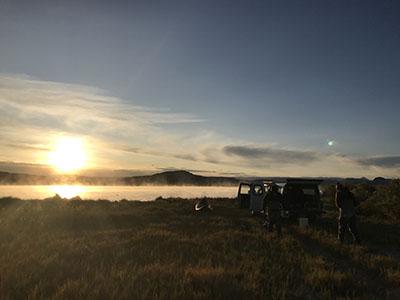
Sunrise at Borax Lake
Biologists prepare for a day of field research as the sun rises over Borax Lake.
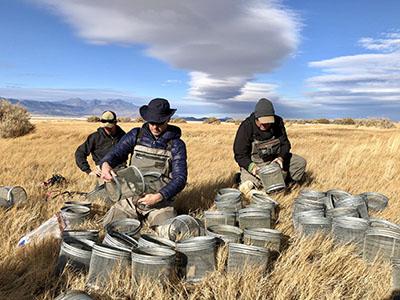
Setting Minnow Traps
Biologists prepare minnow traps to conduct a mark recapture estimate. The traps are baited with bread, a favorite minnow snack.
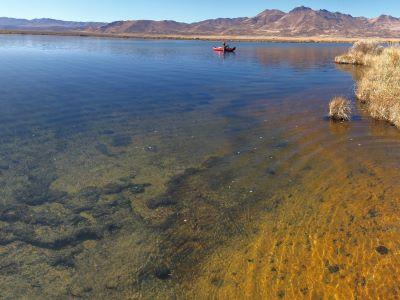
Placing Traps
After the traps are loaded with bait, they are placed in transects across the lake using an inflatable kayak. Approximately 120 traps are deployed to cover the the entire 4.1 hectares of the lake and outflows.
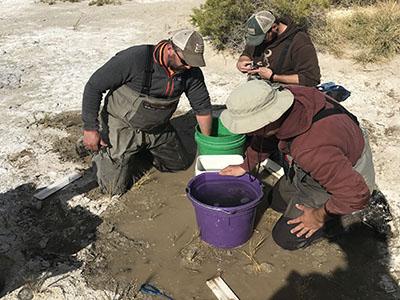
Marking Chub
Biologists mark fish to estimate the size of the population. Fish collected on day 1 are marked, counted, and released. The percentage of marked fish found in subsequent sampling can be used to infer the size of the whole population.
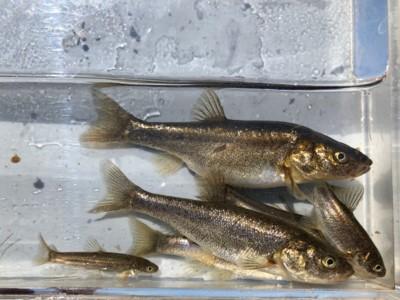
Borax Lake Chub
Most fish could not tolerate the high temperatures and dissolved minerals and metals that characterize Borax Lake, but this species thrives in the harsh environment. Other species that inhabit Borax Lake include an endemic freshwater snail and colonies of cyanobacteria that secrete limestone to create stromatolites, or "living rock".
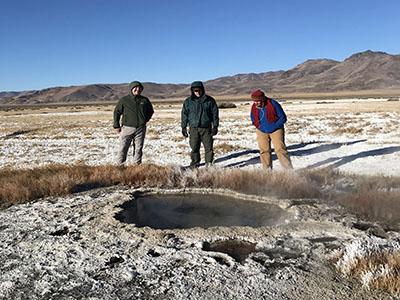
Geothermal Vents Feed the Lake
Biologists inspect a geothermal vent near Borax Lake - part of the same system of vents that feeds the lake. These vents carry hot water rich in dissolved mineral and heavy metals to the surface. One of the mineral in the vents is sodium borate, or borax. Borax was mined from Borax Lake in the late 1800s for use as a preservative, antifungal treatment, and laundry detergent, among other uses. You can still purchase pure borax as a laundry detergent today.
